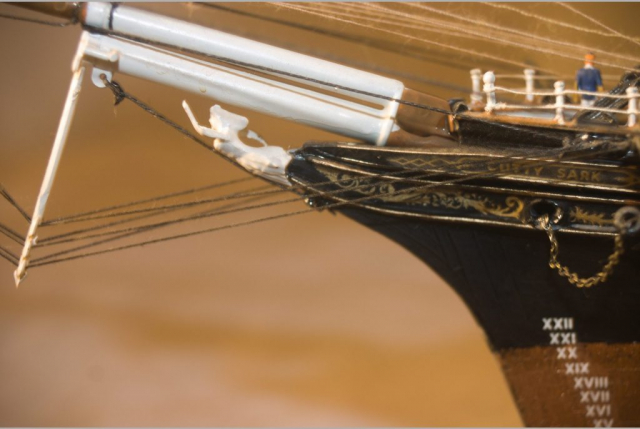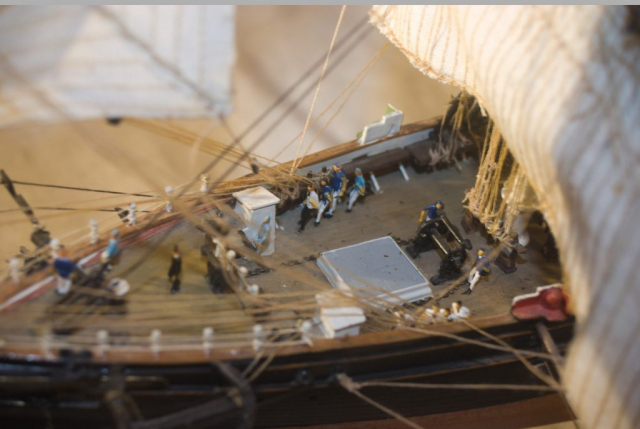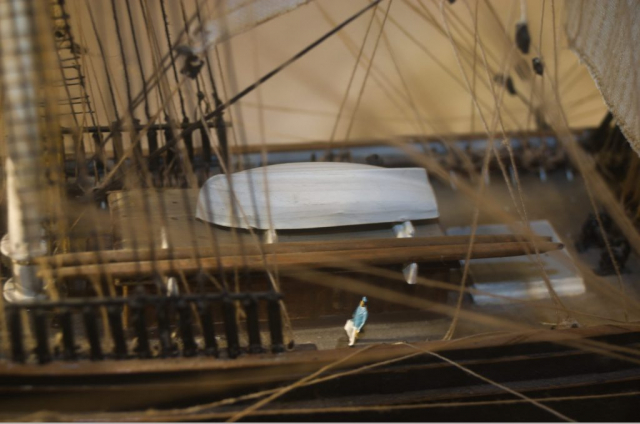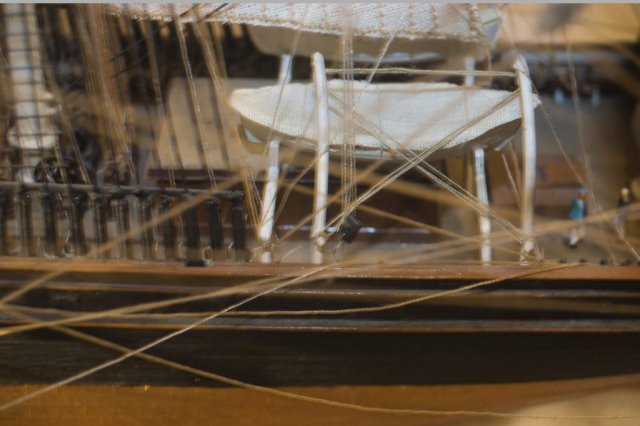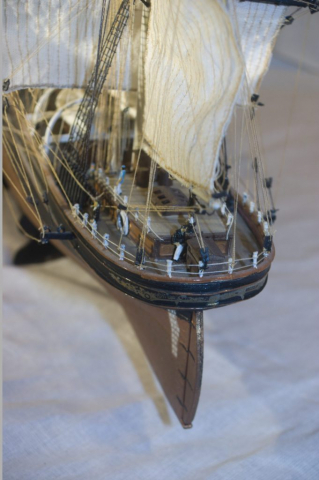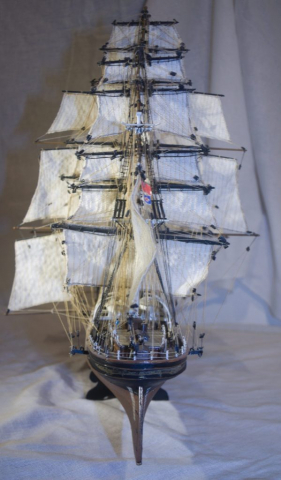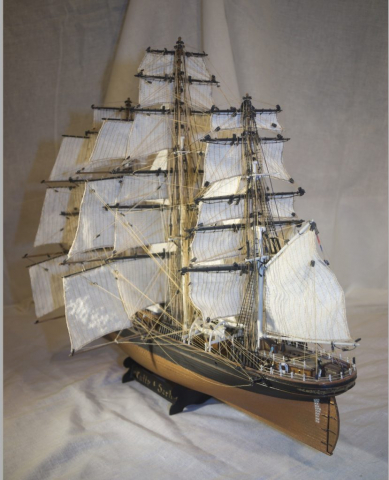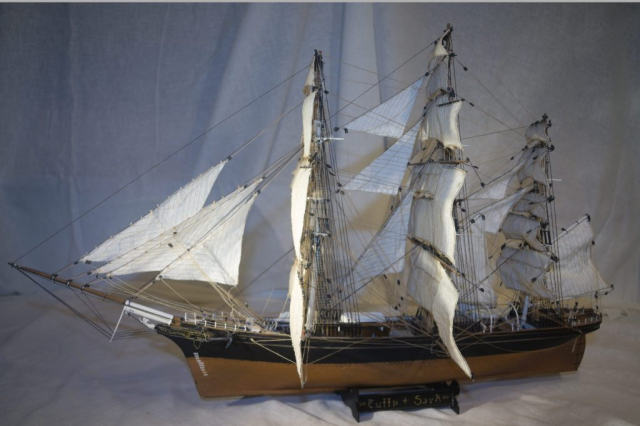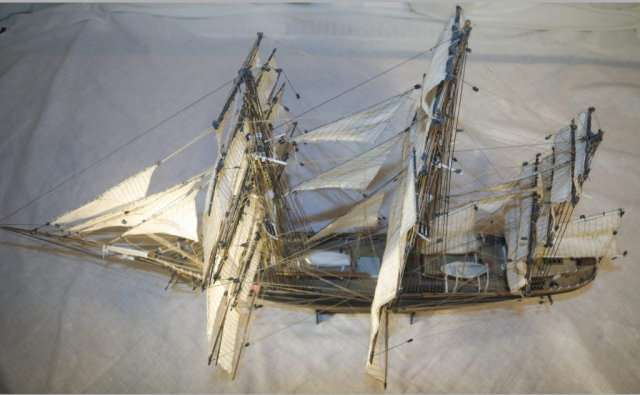Today it’s time for another model kit classic: The English clipper “Cutty Sark” in scale 1/150
About the ship

Of course, there is a lot to write about the original, which you can read on Wikipedia, for example. Built in Dumbarton in 1869, she was first used in the tea trade, where she ran reliably but did not set any records. With the advent of steamships and the opening of the Suez Canal, sailing ships were no longer competitive on the East Asia route and a hard time began with many downs and tragedies.
It wasn’t until Richard Woodget took the wheel that things picked up and she was able to show her potential. He had her masts shortened and the rigging simplified so that the entire ship with its 3000 m² of sail area could be operated by just 20 men. In the ten years under his leadership, it set many records on the wool trips around Cape Horn.
After the full-rigged ship was decommissioned at Willis in 1895, the hull first landed in Portugal, then returned to Falmouth as a stationary training ship, and finally in 1957 the restored ship was moved to a dry dock at Greenwich, where she has been on display as a museum ship ever since.
In 2007, tragedy struck when she almost completely burned out during restoration work. In 2012 the ship was reopened after a complete repair.
The kit
I bought the kit used because has not been available in 1/150 for a long time. The overall quality is very good. All small parts are worked out neatly. The deck planks as well as the hull planking are correctly executed, and the masts and yards are constructed sufficiently stable. As always, the plastic shrouds are rather awful and I replaced them with shrouds I made myself. I also sewed the sails myself, which with almost 40 pieces was an undertaking that I thoroughly underestimated. Since this was also my first major construction project with my own sails, some things didn’t go so well and I made a few mistakes, but I wasn’t motivated enough to resew everything again.
The stairs to the upper decks were designed as solid plastic blocks and I replaced them. In addition, I have added lee sails that are not available in the kit, because I think that makes a grander impression with the beautiful ship.
As usual, there were no blocks. In view of the sheer quantity and the very small scale, I decided to use a fast process made of hard cardboard for this one and focused more on “general impression” than on “absolute attention to detail”.
Building the ship
The average fit was satisfactory. Despite the age of the kit only a few parts were warped and the decals could still be used.
The instructions were understandable and unlike with the Gorch Fock, there were no major errors. The painting instructions were also correct, but in the end I decided on a color variant from the active time under Woodget and against the current one as a museum ship.
The rigging instructions were very spartan and as always I built a more complete version based on the plans and pictures (phew!)
Finally, I also improvised a few sailors from the model railway range to breathe more life into the whole thing.

